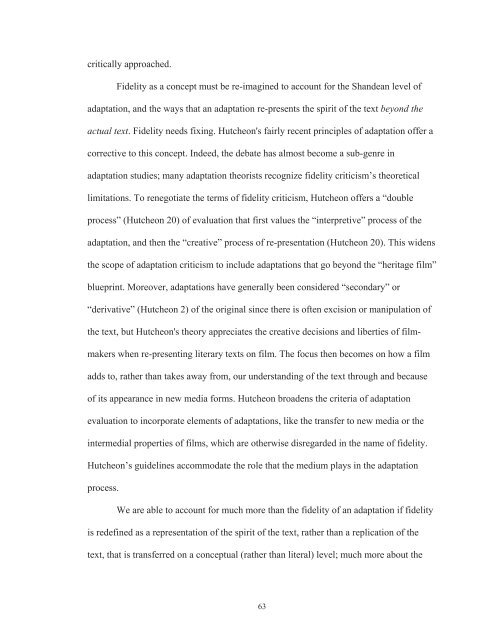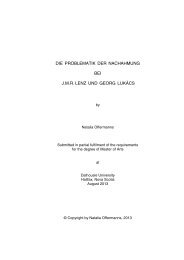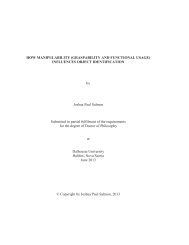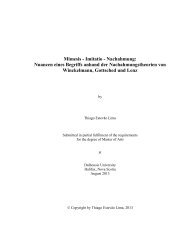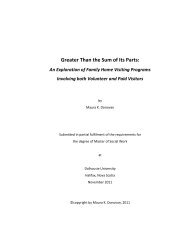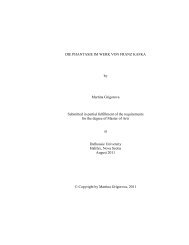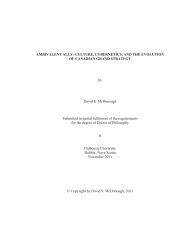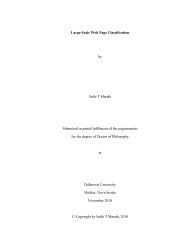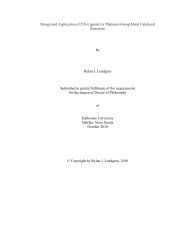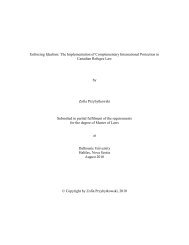ADAPTING TRISTRAM SHANDY by Adria Young Submitted in ...
ADAPTING TRISTRAM SHANDY by Adria Young Submitted in ...
ADAPTING TRISTRAM SHANDY by Adria Young Submitted in ...
You also want an ePaper? Increase the reach of your titles
YUMPU automatically turns print PDFs into web optimized ePapers that Google loves.
critically approached.<br />
Fidelity as a concept must be re-imag<strong>in</strong>ed to account for the Shandean level of<br />
adaptation, and the ways that an adaptation re-presents the spirit of the text beyond the<br />
actual text. Fidelity needs fix<strong>in</strong>g. Hutcheon's fairly recent pr<strong>in</strong>ciples of adaptation offer a<br />
corrective to this concept. Indeed, the debate has almost become a sub-genre <strong>in</strong><br />
adaptation studies; many adaptation theorists recognize fidelity criticism’s theoretical<br />
limitations. To renegotiate the terms of fidelity criticism, Hutcheon offers a “double<br />
process” (Hutcheon 20) of evaluation that first values the “<strong>in</strong>terpretive” process of the<br />
adaptation, and then the “creative” process of re-presentation (Hutcheon 20). This widens<br />
the scope of adaptation criticism to <strong>in</strong>clude adaptations that go beyond the “heritage film”<br />
bluepr<strong>in</strong>t. Moreover, adaptations have generally been considered “secondary” or<br />
“derivative” (Hutcheon 2) of the orig<strong>in</strong>al s<strong>in</strong>ce there is often excision or manipulation of<br />
the text, but Hutcheon's theory appreciates the creative decisions and liberties of film-<br />
makers when re-present<strong>in</strong>g literary texts on film. The focus then becomes on how a film<br />
adds to, rather than takes away from, our understand<strong>in</strong>g of the text through and because<br />
of its appearance <strong>in</strong> new media forms. Hutcheon broadens the criteria of adaptation<br />
evaluation to <strong>in</strong>corporate elements of adaptations, like the transfer to new media or the<br />
<strong>in</strong>termedial properties of films, which are otherwise disregarded <strong>in</strong> the name of fidelity.<br />
Hutcheon’s guidel<strong>in</strong>es accommodate the role that the medium plays <strong>in</strong> the adaptation<br />
process.<br />
We are able to account for much more than the fidelity of an adaptation if fidelity<br />
is redef<strong>in</strong>ed as a representation of the spirit of the text, rather than a replication of the<br />
text, that is transferred on a conceptual (rather than literal) level; much more about the<br />
63


